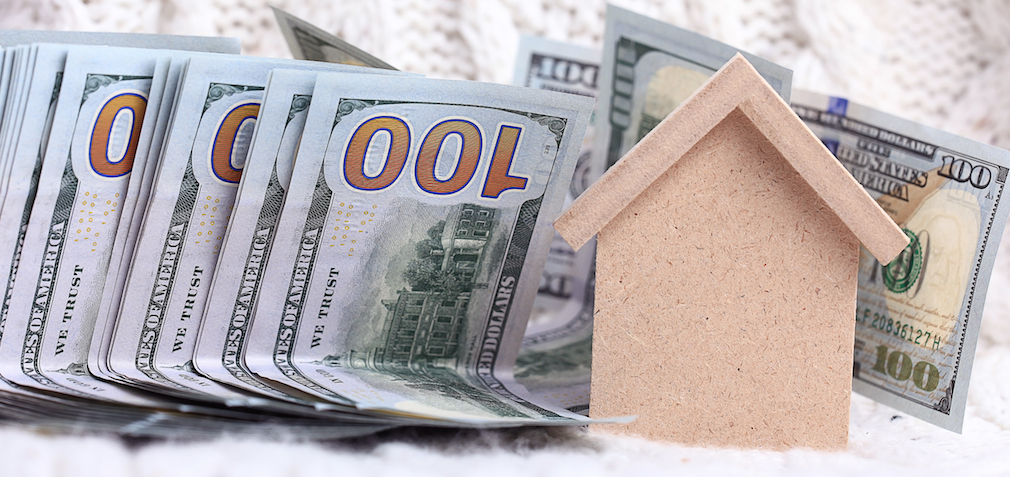FHFA collaborates with Fannie, Freddie to launch resource for non-English proficient borrowers The process of…

A 30-year mortgage typically has lower monthly payments
A bewildering variety of mortgages may be available, but for most homebuyers, there is, in practice, only one.
The 30-year-fixed mortgage is practically an American archetype, the apple pie of financial instruments. It is the path that generations of Americans have taken to first-time home ownership. According to the Mortgage Bankers Association, the majority of people who apply for mortgages apply for 30-year mortgages. But many of those buyers might have been better served if they had opted instead for a 15-year fixed-rate mortgage; the 30-year’s younger, and less popular, sibling. The loans are structurally similar – the main difference is the term.
A shorter-term loan means a higher monthly payment, which makes the 15-year mortgage seem less affordable. But, in fact, the shorter term makes the loan cheaper on several fronts – over the full life of a loan, a 30-year-mortgage will end up costing more than double the 15-year option.
How the Term Affects the Cost
The primary driver of higher costs is time. A mortgage is simply a particular kind of term loan – one secured by real property – and in a term loan, the borrower pays interest calculated on an annual basis against the outstanding balance of the loan. Both the interest rate and monthly payment are fixed.
Because the monthly payment is fixed, the portion going to pay interest and the portion going to pay principal change over time. In the beginning, because the loan balance is so high, most of the payment is interest. But as the balances gets smaller, the interest share of the payment also declines, and the share going to principal increases.
In a 30-year-loan, of course, that balance shrinks much more slowly – effectively, you’re renting the same amount of money for more than twice as long. (It’s more than twice as long, rather than just twice as long, because in a 30-year mortgage, the principal balance does not decline at as fast a rate as in a 15-year loan.) When the interest rate is 4%, a borrower actually pays almost 2.2 times more interest to borrow the same amount of principal over 30 years compared to a 15-year loan.
Differences in Interest Rates
Moreover, because 15-year loans are less risky for banks than 30-year loans, and because it costs banks less to make shorter-term loans than longer-term loans, consumers pay a lower interest rate on a 15-year mortgage – anywhere from a quarter of a percent to a full percent (or point) less. And the government-supported agencies that finance most mortgages impose additional fees, called loan level price adjustments, which make 30-year mortgages more expensive.
Fannie Mae and Freddie Mac charge price adjustments to borrowers who have lower credit scores or are putting down less money.
“Some of the loan level price adjustments that exist on a 30-year do not exist on a 15-year,” says James Morin, senior vice president of retail lending at Norcom Mortgage in Avon, Conn. Most people, according to Morin, roll those fees into their mortgage for a higher rate rather than paying them outright.
Imagine, then, a $300,000 loan, available at 4% for 30 years or at 3.25% for 15 years. The combined effect of the faster amortization and the lower interest rate means that borrowing the money for just 15 years would cost $79,441, compared to $215,609 over 30 years, or nearly two-thirds less.
The rub, of course, is the monthly payment. The price for saving so much money over the long run is a much higher monthly outlay: The payment on our hypothetical 15-year loan is $2,108, or nearly 50% more than the monthly payment for the 30-year loan ($1,432).
If You’re About to Retire
If you can afford the higher payment, it is in your interest to go with the shorter loan, especially if you are approaching retirement when you will be dependent on a fixed income.
For some experts, being able to afford the higher payment includes having a rainy day fund tucked away – according to Bob Walters, chief economist for Quicken Loans, your liquid savings should amount to at least a year’s worth of income. What financial planners like about the 15-year mortgage is that it is effectively “forced saving,” in the form of equity in an asset that normally appreciates. (Although like other equities, homes rise and fall in value.)
Weighing College and Retirement Savings Goals
There are some instances where a borrower may have incentives to save and invest that money elsewhere, as in a 529 account for college tuition or a 401(k) retirement account, where an employer matches the borrower’s contributions. And with mortgage rates so low, a borrower could, in theory, choose to borrow with a 30-year note, and invest the difference between that lower monthly payment and the higher amount he or she would have paid each month on the 15-year mortgage.
For example, in the previous example, a 15-year loan monthly payment was $2,108, and the 30-year loan monthly payment was $1,432. A borrower could invest the $676 difference elsewhere.
The back-of-the-envelope calculation is how much (or whether) the return on the outside investment, less the capital gains tax you owe on it, exceeds the interest rate on the mortgage, after accounting for the mortgage interest deduction. (For someone in the 25% tax bracket, the deduction might reduce the effective mortgage interest rate from, say, 4% to 3%.)
This gambit, however, demands a propensity for risk, according to Shashin Shah, a certified financial planner in Dallas, because the borrower will have to invest in volatile stocks.
“Currently there’s no fixed-income investments that would yield a high enough return to make this work,” says Shah. It also requires the discipline to systematically invest the equivalent of those monthly differentials and the time to focus on the investments, which, says Shah, most people lack.
(For more on the special considerations of getting a mortgage at various life stages, see Getting A Mortgage In Your 20s and Getting A Mortgage In Your 50s.)
A Best-of-Both-Worlds Option?
Most borrowers evidently also lack – or at least think they lack – the wherewithal to make the higher payments required by a 15-year mortgage. But there is a simple solution for 30-year borrowers to capture much of the savings of the shorter mortgage: Simply make the larger payments of a 15-year schedule on your 30-year mortgage, assuming the mortgage has no prepayment penalty.
You are entitled to direct the extra payments to principal, and if you make the payments consistently, you will pay the mortgage off in 15 years. If times get tight, you can always fall back to the normal, lower payments of the 30-year schedule.
The Bottom Line
Many buyers would be well -served if they opted for a 15-year fixed-rate mortgage instead of a 30-year mortgage. A lower interest rate and shorter term mean that you will pay considerably less for your loan. Do the math yourself below by using our mortgage calculator.
And as I say: “There’s not a single client that we have who’s paid off their house that has ever felt bad about it.” The rub is the higher monthly payment, and it is sensible to weigh the value of a less costly mortgage against other savings priorities like college, retirement and a rainy-day fund.




This Post Has 0 Comments